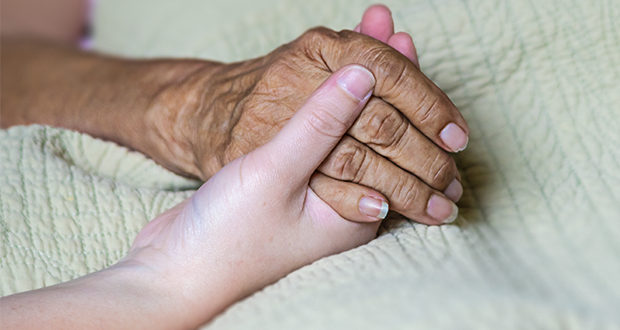The Chief of Australia's leading palliative care organisation has called to embed end-of-life services into aged-care homes after new data showed increased pressure on public hospitals.
Last week the Australia Institute of Health and Welfare (AIHW) reported that the number of palliative care-related hospitalisations has increased to 23 per cent over the past five years.
Palliative Care Australia chief Camilla Rowland said the numbers pointed towards a system-wide hospitalisation flaw.
"The level of hospitalisations are almost double," Ms Rowland told Aged Care Insite.
"Instead of people receiving care in the community at home, they need to go to hospitals."
The AIHW report found that the average length of a stay for palliative care was twice as long at an average of 10 days compared to five days for all hospitalisations.
Ms Rowland said the existing pressure on hospitals made it difficult for workers to care for palliative care patients, leading to people not receiving the health services they deserve.
"Increased hospitalisations have a huge impact on the health system and point to people either not getting a choice they deserve or there isn’t enough investment," she said.
"We know that palliative care is not embedded into the aged-care system.
"People are finding more people are needing palliative care, especially the ageing population, and the community-based system is not working."
In the wake of recommendations handed down by the Aged Care Royal Commission, industry experts are now assessing how to improve palliative-care access in residential aged-care homes.
Twelve recommendations in the Commission's final report targeted specific needs for palliative care to be more comprehensible.
"There is a great deal of positive and much-anticipated reform in aged care," Ms Rowland said.
"We are waiting for data to hopefully show an increasing access to palliative care for aged care residents."
Ms Rowland said resources and training for staff are critical to help elevate the strain hospitals workers are experiencing.
"It’s important we set in place systems, not just pilot projects, to make sure staff understand how to assist someone when they’re palliative," Ms Rowland said.
"We need to make sure that staff know the signs when people are at different stages; how to do symptom control and pain management, and also tend to people’s social, emotional, and spiritual needs."
Do you have an idea for a story?Email [email protected]
 Aged Care Insite Australia's number one aged care news source
Aged Care Insite Australia's number one aged care news source

